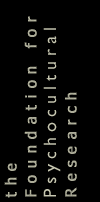Rationale and Scope
Cultural and Biological Contexts of Psychiatric Disorder
Implications for Diagnosis and Treatment
January 22-24, 2010
Friday - Sunday
University of California, Los Angeles
Our concept of mental illness in the West is largely shaped by the Diagnostic and Statistical Manual of Mental Disorders (DSM). The DSM is currently undergoing its fifth revision since the original manual was published in 1952. A draft will be posted online in February 2010; the final version should be available in May 2013. The DSM categorization of psychiatric disorders has been useful in driving research, and psychiatric neuroscience has made enormous strides in identifying some of the brain-based factors that contribute to mental disorders as well as suggesting possible drug therapies. However, many neuroscientists, clinicians, and anthropologists have serious issues with its usefulness for research, clinical work, population health, and social policy.
This conference was originally conceived to bring these groups together to think about mental illness in terms of dimensions, thresholds, trajectories, and contexts or predicaments, key concepts that the organizers felt would allow us to move beyond notions of disorder and diagnostic categories to consider such factors as contexts (genetic as well as environmental), meanings/local explanations, individual experience, and the different ways that suffering and distress are expressedd. The timing of the conference was critical. The fact that DSM-V is being envisioned as a “living document” presents an important opportunity to engage in a more developmental, social, cultural vision of psychiatry and psychopathology.
In our planning meetings, we focused on the biological environments and processes that underlie (and may be common to) psychiatric disorders, as well as the local social and cultural contexts in which they occur. However, when the time came to organize the program, it was easier to distinguish the core sessions by category (autism spectrum conditions, bipolar disorder, schizophrenia, anxiety-related conditions) than by concept (dimensions, thresholds, predicaments, etc.) and then invite speakers who could address the biological and cultural aspects. To increase understanding of the experience as well as the differential expression of these conditions, we invited Roy Richard Grinker, Kay Redfield Jamison, Emily Martin, and Elyn Saks because their work uniquely bridges professional academic, clinical, and personal worlds, in each of which autism, bipolar disorder, and schizophrenia play a part.
Ultimately, the conference was unique in several ways: its interdisciplinary focus; the quality of presentations and roundtable discussions by a group of distinguished contributors from neuroscience, anthropology, and psychiatry; and the emphasis on identifying key questions and research opportunities at the intersection of biology and culture. A final roundtable discussion, which was moderated by cultural psychiatrist James Boehnlein, and included experimental psychologist David Jentsch, anthropologist Tanya Luhrmann, and cultural psychiatrists Roberto Lewis-Fernández and Laurence Kirmayer, focused on integrating biology and culture into the future DSM and beautifully demonstrated that five socially interacting brains are better than one in terms of articulating the importance of a multi-level approach to psychic distress, including the use of alternative models of the impact of diagnosis on the experience of illness (such as Ian Hacking’s “looping” effect) and novel, humane ways of understanding and addressing symptoms like “hearing voices” that maintain the dignity of persons in distress.

![The Foundation for Psychocultural Research [logo]](images/gui/logo.gif)

